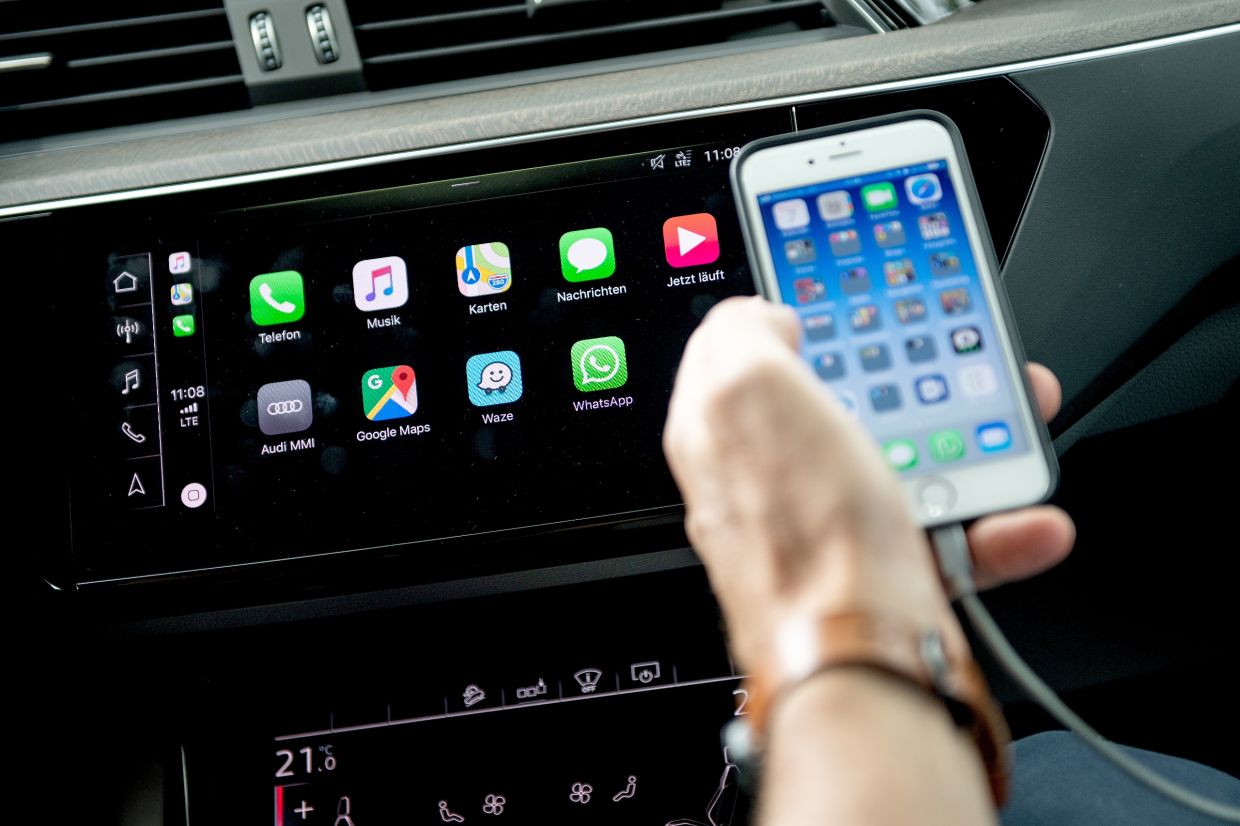Pairing your phone with your car can be a hassle, but it’s worth it
By DPA | 20 August 2022
MUNICH: Being able to access smartphone content while behind the wheel is extremely practical, whether it's to make a phone call, listen to music, or have the next chapter of an audio book read aloud.
But pairing your phone with your car can be a nightmare sometimes. How and whether you can make it work primarily depends on the smartphone's operating system and the vehicle's technical capabilities.
"In the best case, (pairing) happens automatically and the user doesn't even notice that the smartphone is connecting to the car's entertainment system," says German tech expert Timo Brauer.
"That means access to the content has been established and you can use the device immediately."
One way to pair your phone with your car is via Bluetooth, which will allow you to make phone calls and listen to music, and also send text messages, Brauer explains.
However, if you want to use more features, you have to connect using Android Auto or Apple Carplay, either wirelessly or by cable, depending on the phone's operating system. By now, most modern cars support these two interfaces.
No distractions allowed
"The basic idea with Apple Carplay and Android Auto is to mirror certain functions or apps onto the vehicle display – and only with a limited amount of information, so as not to distract the driver," explains Hannes Rügheimer from the trade magazine connect. This includes, for example, music playback or navigation.
However, the controls are greatly reduced compared to what you would get on the smartphone. With WhatsApp or iMessage, for example, you only receive a notification that a new message has arrived.
"You can also have the message itself read out to you, but not read it yourself on the vehicle display," says Rügheimer.
Whether the interaction between smartphone and Apple Carplay or Android Auto works wirelessly or with a cable mostly depends on the age of the vehicle.
"New vehicle models usually support both variants, but on slightly older ones up to around 2019, only the USB variant usually works," Rügheimer says.
However, you can use an adapter to convert a wired connection to a wireless one.
Some don’t play ball
Some vehicle manufacturers have complicated things further, however. The Tesla system, for example, doesn't support Apple Carplay or Android Auto, Brauer says, adding that you can only connect your smartphone to the car via Bluetooth to use its functions.
If you're driving an older model with an old-school car radio, you have the option of replacing the installed device. A modern receiver for the car is available from around €300 (RM1,347)/US$300 (RM1,342).
"Alternatively, you can also mount an external display with Carplay and Android Auto on the windshield or dashboard," Brauer says. But that requires cables, including for power supply.
Another option is to place the smartphone in a suitable holder in the field of vision. However, Hannes Rügheimer advises against this: "For one thing, there is a great risk of distraction.”
Depending on the country you live in, it may also be illegal to interact with your smartphone while driving.
Voice control is always safer
In the interest of safety and to keep distractions to a minimum, most systems can now be operated using voice control. In addition, Apple Carplay and Android Auto severely limit the number of apps you can use while they're running.
"Apple and Google check each individual app plus the specific implementation before they allow access to the car display," says Rügheimer. For example, audio streaming is possible, but TV or video streaming is not.
Tags
Autos News
Reviews

Great Wall Motor (GWM): Going high-five in Beijing

Geely Driving Experience in Beijing: Zeekr 001 FR hypercar d...

Jaecoo J7: Ready to rumble

7.6
Hyundai Ioniq 6 Max RWD driven

8.2
Proton X90 Flagship: Powerful, roomy, refined, premium appoi...

Tesla's brash Cybertruck: A blend of Wild West and space tec...

6.0
Royal Enfield Interceptor 650: Hark to the past

Ferrari Roma Spider: Open-top romp
Videos

Aston Martin New Vantage Launch Video

Bentley's new Ultra Performance Hybrid Sound

Finding out remaining useful life of an EV battery
